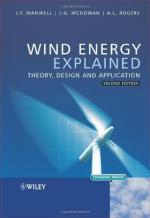|
This section contains 301 words (approx. 2 pages at 300 words per page) |
Wind Power
The power in the wind is extracted by having it push moving wings which spin a rotor. The amount of power transferred is a function of the wind speed cubed. Density is also an important factor. The denser the air is, the more energy can be produced. Because wind speed and air density changes to often, the power produced by windmills comes in short bursts. The result of this is that wind energy is not additional output of energy cannot be supplied in response to a larger demand. Wind generators are practical where the average wind speed is greater than 12.5 mph. An ideal location would have a near constant flow of wind throughout the year. Many locations do not have these conditions and therefore cannot use wind energy. Additionally, many wind turbine generators have low temperature operating limits which restrict the application in the northern areas. These are some drawbacks to wind energy.
Because of these drawbacks, many wind turbines have been installed offshore where temperatures are steadier and the wind is unrestricted. Offshore wind turbines are also considered to be less unsightly. However, offshore conditions are harsh, abrasive, and corrosive, and it is often not possible to repair a broken down turbine in open waters.
Wind energy technologies have gotten better, but still need improvement. However, they have the potential to replace fossil fuels as the leading energy source.
|
This section contains 301 words (approx. 2 pages at 300 words per page) |


